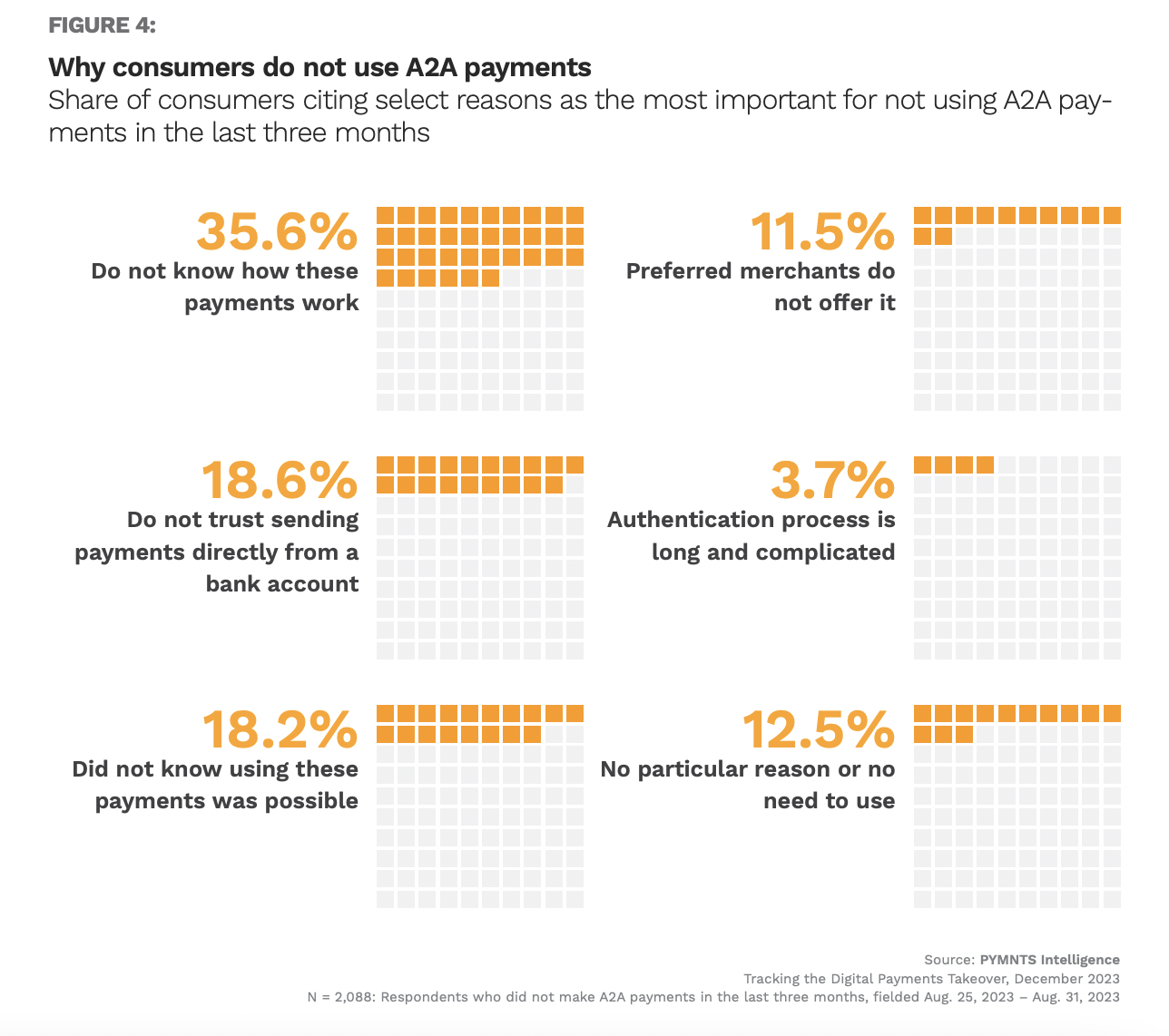
For account-to-account (A2A) payment providers, PYMNTS Intelligence research finds, education continues to present a huge barrier to adoption.
A2A payments, which bypass the middleman to move money quickly from one account to another, commonly enabled by providers such as PayPal, Venmo or Cash App, are gaining ground. In fact, 36% of consumers use them, according to the December 2023 PYMNTS Intelligence study “Tracking the Digital Payments Takeover: Consumer Familiarity Controls Account-to-Account Payment Growth,” created in collaboration with Amazon Web Services.

Yet the study, which drew from a survey of more than 3,300 U.S. consumers, found that, among the nearly two-thirds who had not made A2A payments in the previous three months, there was a gap in understanding. The most common reason cited for not having done so was that many consumers do not know how these payments work, with 36% of non-users listing this as the most important reason for not making A2A payments.
Indeed, players in the space are noting consumers’ confusion and the challenges it presents.
Nuvei Vice President of Product Ed Dean noted in an interview with PYMNTS that there is a lack of familiarity that’s holding back wider use of A2A transfers, and that has to do with the newer use cases being created around an old payment system.
“What has changed is the bank’s introduction of [application programming interface (API)], allowing a consumer, when making a purchase, to click a button that will allow them to log onto their bank and have their bank provide the account and routing number to the processor — not to the merchant, but to the processor, keeping that sensitive data away from the merchant,” Dean said. “This allows the merchant to process the sale.”
As Chris Jameson, managing director and head of GTS product management EMEA at Bank of America, told PYMNTS in an interview last year, A2A payments are quicker and more secure, allowing online shoppers to instantly pay from their bank accounts without the need for credit or debit card information.
“[It’s] an alternative to cards,” Jameson said at the time. “The payment will actually come from the consumer’s bank account through various API calls rather than going through the card rails.”